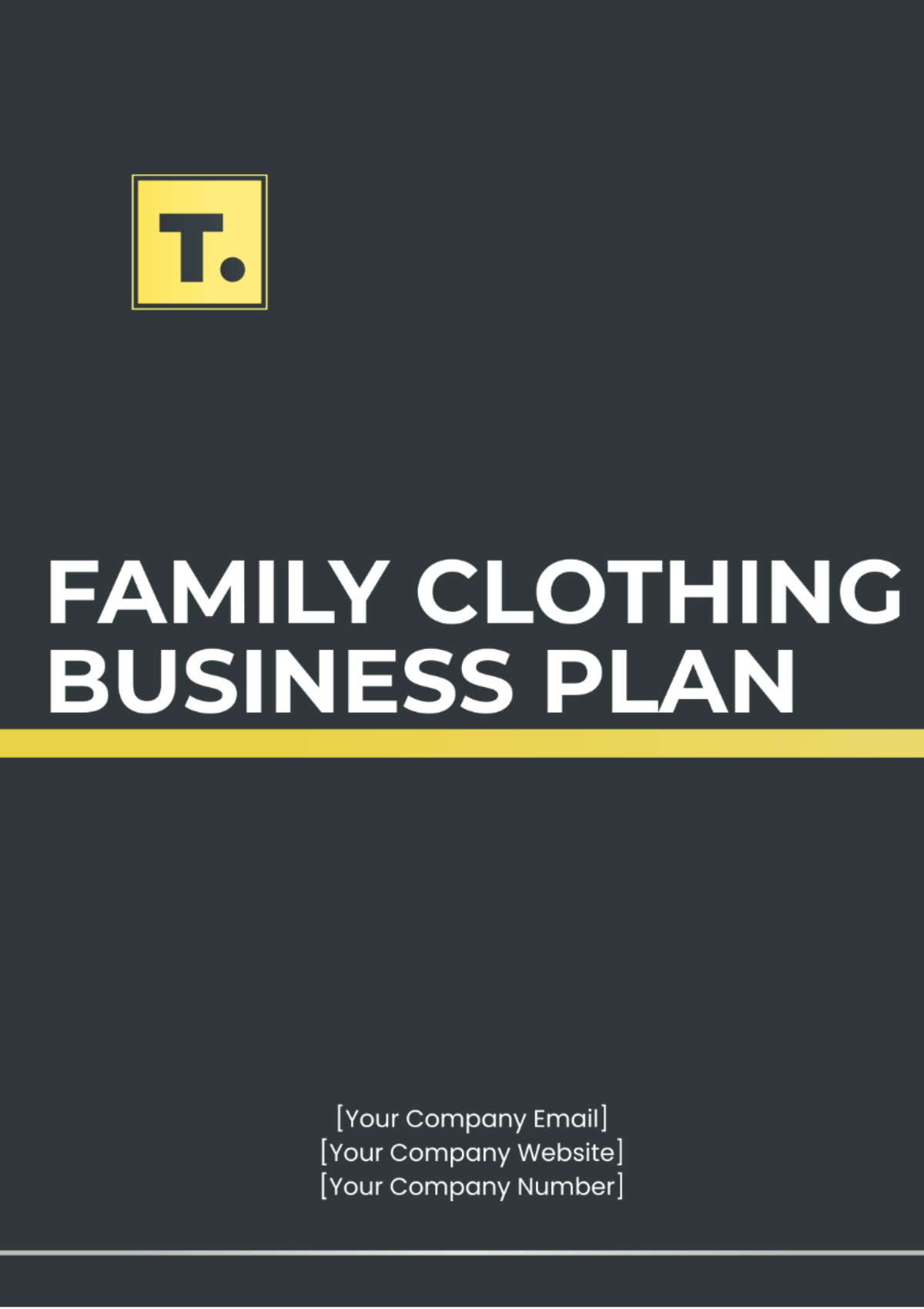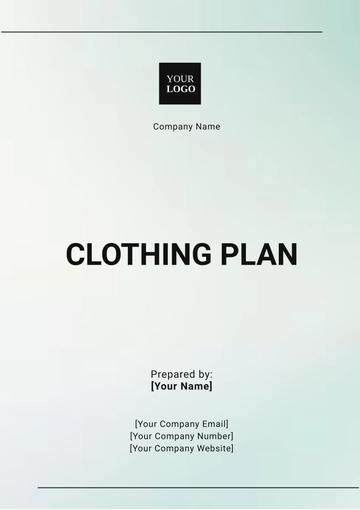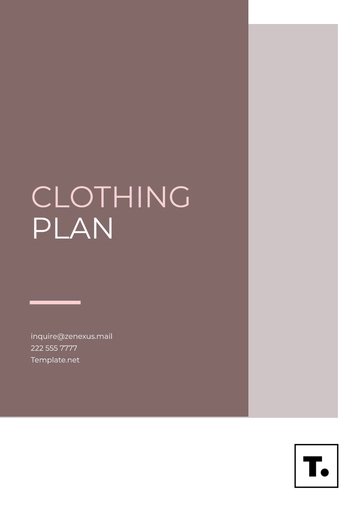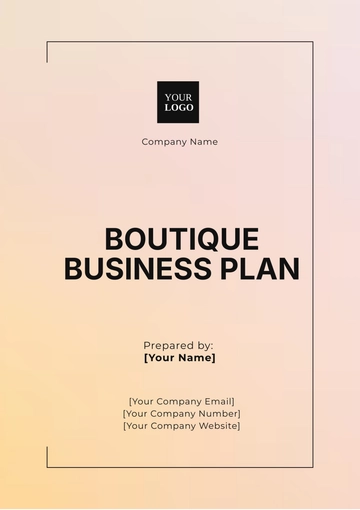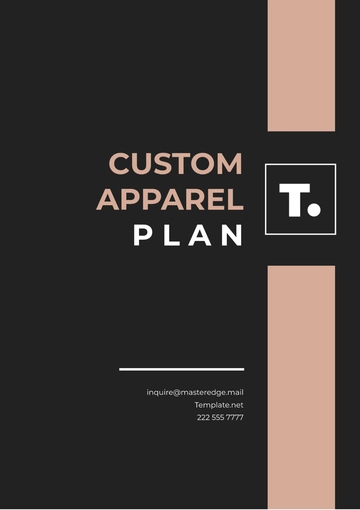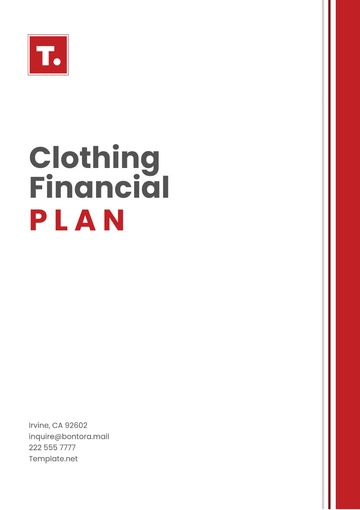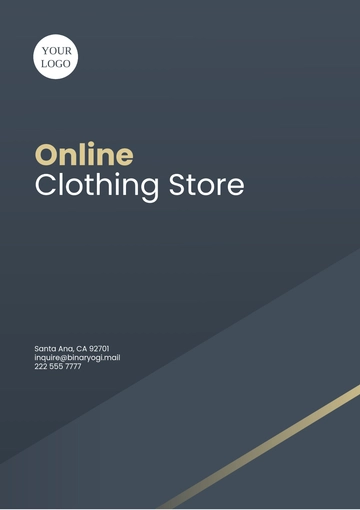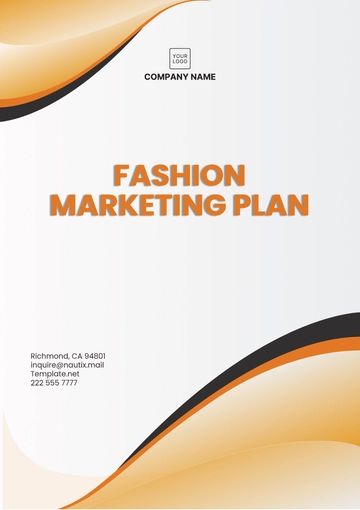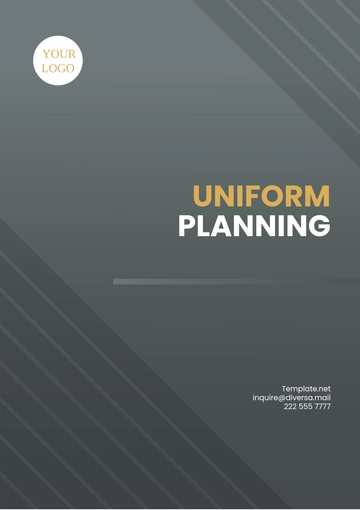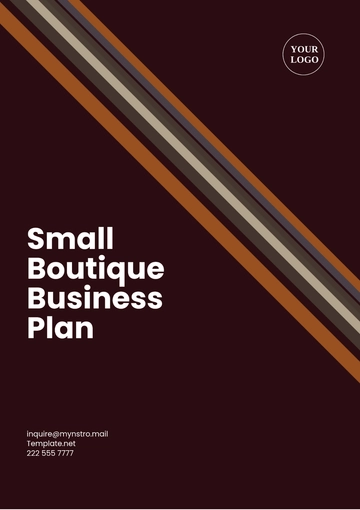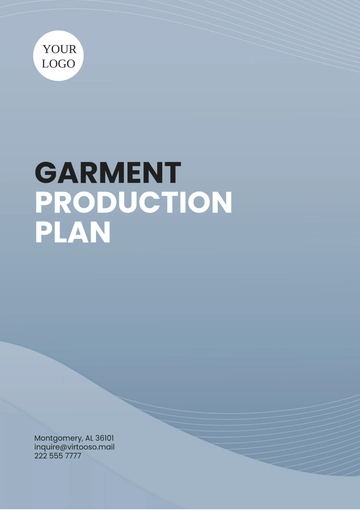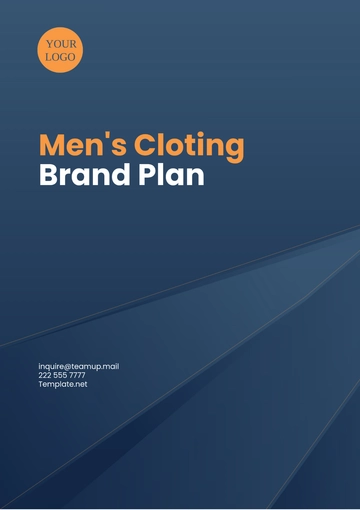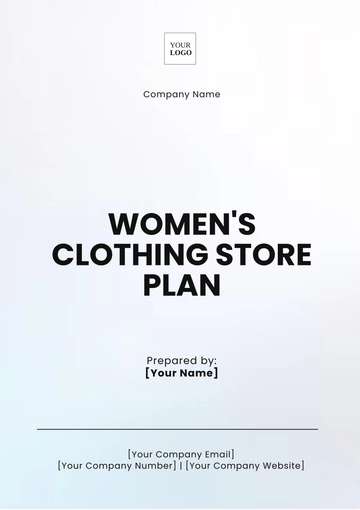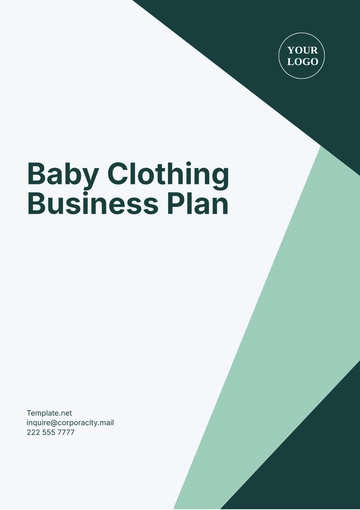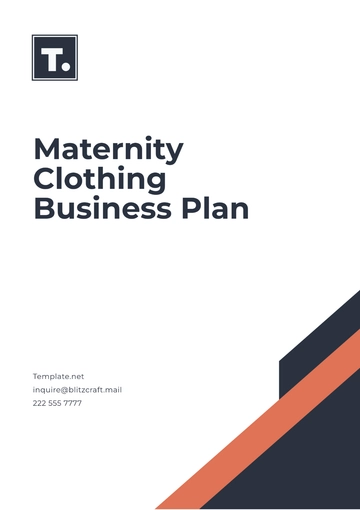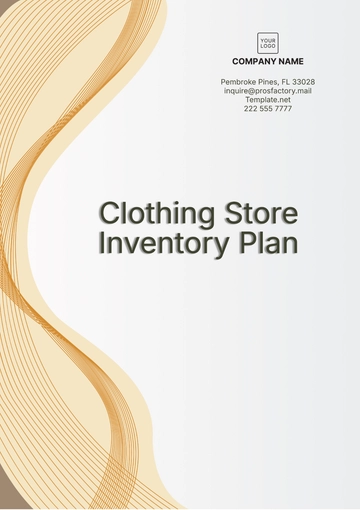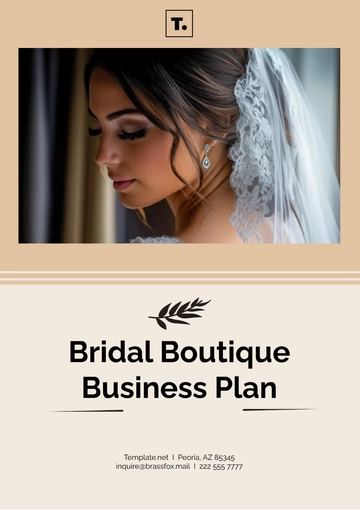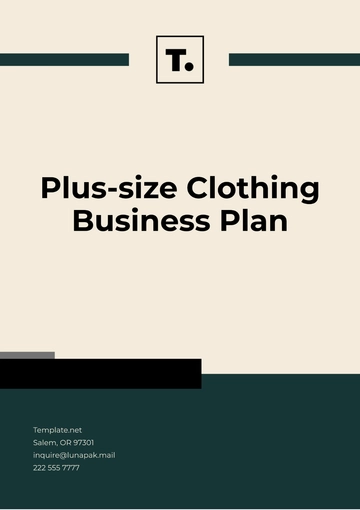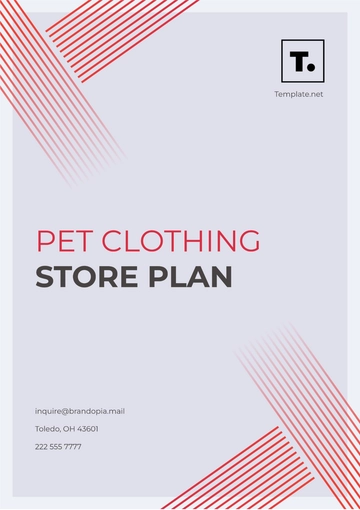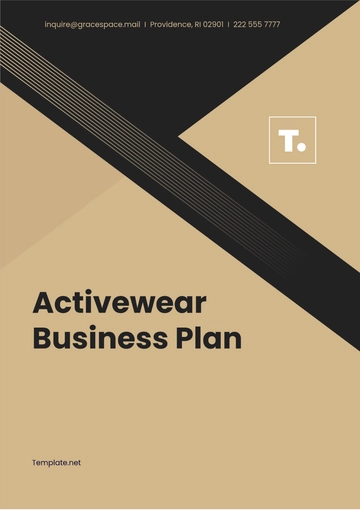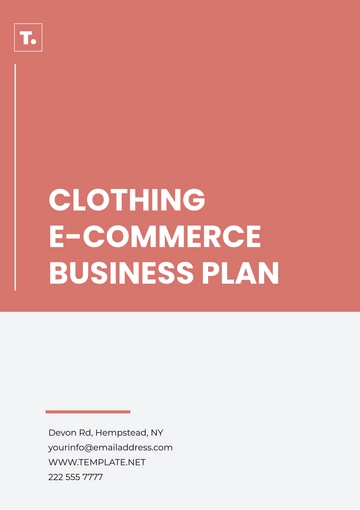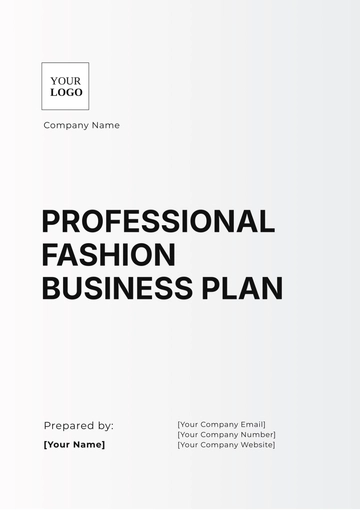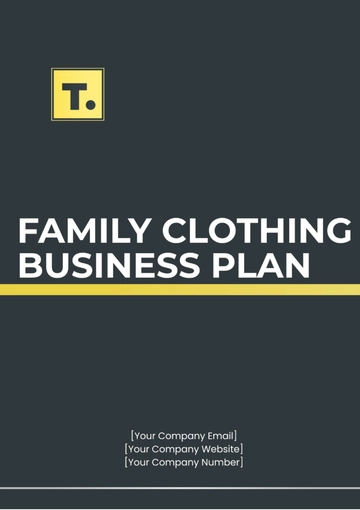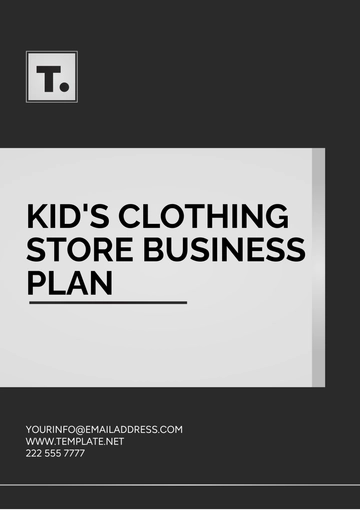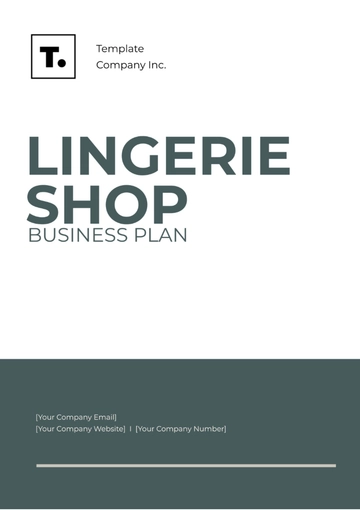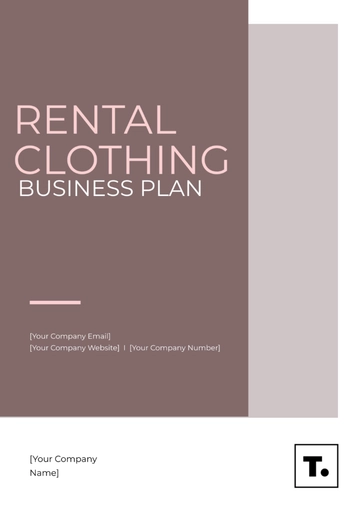Family Clothing Business Plan
I. Executive Summary
A. Business Overview
[Your Company Name] is a family clothing store dedicated to providing high-quality and fashionable clothing for individuals of all ages. Located in [Your Company Address], our store aims to become a trusted destination for families looking for stylish and affordable apparel.
B. Mission Statement
Our mission is to offer a diverse selection of clothing options that cater to the entire family while providing exceptional customer service and a pleasant shopping experience.
C. Business Objectives
To establish [Your Company Name] as a recognizable brand within the local community.
To expand our product range to include accessories and footwear within the first year of operation.
To achieve a revenue growth rate of 20% annually for the first three years.
II. Company Description
Company Phone: [YOUR COMPANY NUMBER]
Company Email: [YOUR COMPANY EMAIL]
Company Website: [YOUR COMPANY WEBSITE]
Company Social Media: [YOUR COMPANY SOCIAL MEDIA]
Legal Structure
[Your Company Name] is structured as a Limited Liability Company (LLC), established on January 1, 2050.
III. Products and Services
A. Product Offerings
Men's Clothing: Including shirts, pants, suits, and outerwear.
Women's Clothing: Including dresses, tops, skirts, and jackets.
Children's Clothing: Including apparel for infants, toddlers, and teenagers.
Accessories: Including hats, scarves, belts, and jewelry.
Footwear: Including shoes, boots, and sandals.
B. Additional Services
IV. Market Analysis
A. Industry Overview
The clothing retail industry is a dynamic and competitive market driven by changing fashion trends and consumer preferences. Despite online competition, brick-and-mortar stores continue to thrive by offering personalized shopping experiences and immediate gratification.
B. Target Market
Our primary target market includes families and individuals seeking fashionable clothing at affordable prices. We aim to appeal to a wide demographic, including men, women, and children of all ages.
C. Competitive Analysis
Our main competitors include other family clothing stores in the area, as well as online retailers and department stores. However, [Your Company Name] differentiates itself by offering a curated selection of trendy and affordable clothing for the entire family, coupled with exceptional customer service.
V. Marketing Strategy
A. Brand Positioning
[Your Company Name] positions itself as a family-friendly, fashion-forward clothing store that values quality, affordability, and customer satisfaction.
B. Marketing Channels
Social Media: Leveraging platforms such as Facebook, Instagram, and Twitter to showcase our products and engage with customers.
Local Advertising: Utilizing print media, such as newspapers and magazines, as well as outdoor advertising, such as billboards and banners, to reach our target audience.
Events and Promotions: Hosting in-store events, sales, and promotions to attract customers and drive foot traffic.
C. Customer Loyalty Program
Implementing a customer loyalty program to reward repeat customers with discounts, special offers, and exclusive perks.
VI. Operations Plan
A. Store Layout and Design
Designing a welcoming and visually appealing store layout that encourages browsing and discovery.
B. Inventory Management
Implementing efficient inventory management systems to ensure adequate stock levels and minimize stockouts.
C. Staffing Plan
Hiring knowledgeable and friendly staff members who are passionate about fashion and dedicated to providing excellent customer service.
VII. Financial Plan
A. Startup Costs
Lease/Rent: $30,000
Initial Inventory: $50,000
Store Renovation: $20,000
Marketing and Advertising: $10,000
Working Capital: $40,000
B. Revenue Projections
Year 1: $300,000
Year 2: $360,000
Year 3: $432,000
C. Expense Projections
Fixed Costs: $120,000 per year
Variable Costs: $60,000 per year
Total Costs: $180,000 per year
D. Break-Even Analysis
Our break-even point is projected to be reached within 12 months, with a monthly revenue target of $25,000.
VIII. Risk Analysis
A. Market Risks
B. Operational Risks
Supply chain disruptions
Staff turnover
Technology failures
C. Financial Risks
Cash flow problems
Overhead cost increases
Credit risk
D. Legal and Regulatory Risks
E. Mitigation Strategies
Diversify markets and products
Maintain cash reserves
Cultivate supplier relationships
Invest in staff retention
Ensure technology resilience
Stay compliant with laws
IX. Conclusion
In conclusion, [Your Company Name] is poised to capitalize on opportunities in the family clothing market while navigating potential risks. By leveraging strategic mitigation strategies and remaining agile in response to market dynamics, we are confident in our ability to achieve our business objectives and establish [Your Company Name] as a trusted and successful brand in the fashion industry. With a commitment to quality, innovation, and customer satisfaction, we look forward to a prosperous future ahead.
X. Appendix
Supporting Documents
Resumes of Key Management
Market Research Data
Detailed Financial Projections
Legal Documents (Licenses, Permits, etc.)
Plan Templates @ Template.net
